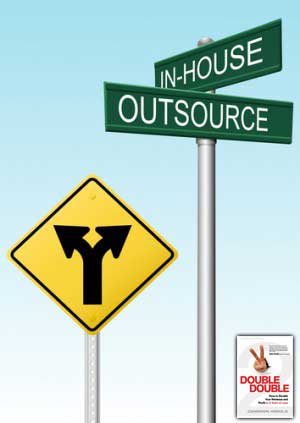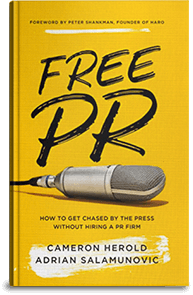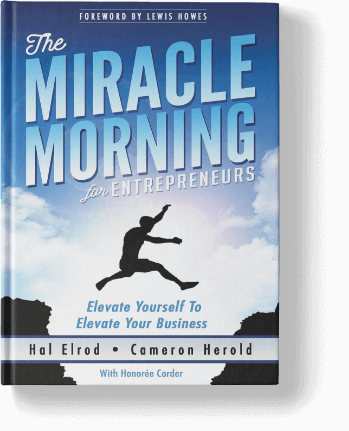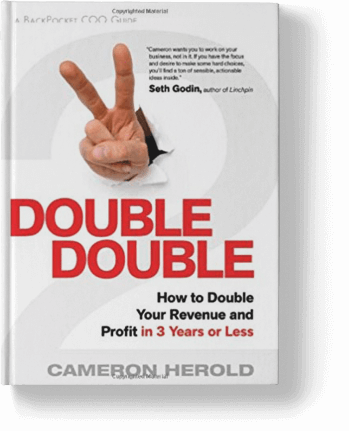In the now famous scene from the movie Glengarry Glen Ross, Blake, a high- performing salesman played by actor Alec Baldwin, dresses down a team of under-performing salesmen complaining about their leads.
Towards the end of the profanity-laced lecture, Blake says, “These are the new leads. These are the Glengarry leads. And to you, they’re gold. And you don’t get them. Why? Because to give them to you is just throwing them away. They’re for closers. I’d wish you good luck but you wouldn’t know what to do with it if you got it.”
Blake’s point is that sales is a mindset. And if you don’t have the right mindset, all the leads in the world won’t help you.
While you might not run your PR team like a boiler room, there’s something to be learned here. When it comes to making contact with members of the media, nothing is worse than not knowing what to do with it.
The cure? Being prepared.
Have more than one plan
Everybody has objections. That means reporters will too. Sometimes a reporter will say your story isn’t a good fit for the publication. Other times he or she might not find the angle you’re presenting to be compelling.
This is where it’s key to think of PR as a sales function rather than a marketing function. Your and your team’s job is to overcome these objections and persuade the reporter to pick up the story.
The best way to overcome objections when you’re pitching your content to a writer is to plan ahead and have at least two to three potential story angles to sell.
That way, if the reporter doesn’t like the first angle, or you can’t make that first angle fit the medium’s particular needs, you can sell the writer on a second story angle while you’ve got him or her on the phone.
Get their attention
Once you’ve piqued a reporter’s curiosity with the right angle, you want to capture his or her attention. This means helping the reporter imagine what could be when it comes to your story.
Come up with a catchy title like, “An Entrepreneurial Resource You Keep in Your Back Pocket.” Exercise caution, though. You’re not writing the actual title for the writer; you’re coming up with a headline that’s creative and compelling enough to catch the writer’s attention so you can pitch your angle about the story you want him or her to write.
For each angle or title, list four to five key bullets to help the writer craft a story. Some examples that correspond to the sample title I just used include:
- Entrepreneurs and their teams have scheduled access to Cameron Herold monthly.
- They get access to his skills at one-tenth the cost of hiring someone with his skills full-time.
- They get access to him whenever they need him for a quick call or email. Just like having him in their back pocket.
Once on the phone, share these points with the reporter to help him or her visualize the story flow and see why it would be useful to write about. In this way you present a compelling “product” for the reporter to buy—and closing shouldn’t be hard, after all the price is right, free.
Leverage their interest
While it’s nice to get your story out there, it can be a wasted opportunity if you don’t leverage the opportunity. In the end, PR is simply a way for you to get the word out about your company and product. The media won’t know what you want them to say. You need to guide them. List five key bullets about your company that you will mention to the media every time you interact, regardless of the story angle you’re pitching. For example, here’s what I have for me:
- Cameron Herold has clients on 4 continents.
- He’s done speaking events in 28 countries, on five continents.
- He coaches 14 entrepreneurs monthly.
- He was the COO for 1-800-GOT-JUNK?, growing the company from $2 million to $106 million in six years.
By constantly pounding home these points, you’ll ensure consistency of message for your brand every time you get a story out there. Essentially, it’s free advertising. And who doesn’t love that?
 What to Say to the Media
What to Say to the Media
 If you’re reading this article, you’re probably interested in performing PR functions yourself, or in hiring team members to do so (or both). It will help you find the right people to execute the PR sales role in your organization, and secure free publicity for your company.Even though this falls under the category of public relations, what you’re really hiring for is a person who likes to do telephone sales. You’re looking for someone who loves to pitch people, and is technically savvy enough to compile resources online and monitor the media response to your campaign. The first rule –
If you’re reading this article, you’re probably interested in performing PR functions yourself, or in hiring team members to do so (or both). It will help you find the right people to execute the PR sales role in your organization, and secure free publicity for your company.Even though this falls under the category of public relations, what you’re really hiring for is a person who likes to do telephone sales. You’re looking for someone who loves to pitch people, and is technically savvy enough to compile resources online and monitor the media response to your campaign. The first rule –

 This post is from a guest blog post I wrote last week for McNeill Nakamoto a great Vancouver recruiting firm. Jessica Rozitis kindly let me re-run it here.
This post is from a guest blog post I wrote last week for McNeill Nakamoto a great Vancouver recruiting firm. Jessica Rozitis kindly let me re-run it here. For more information on this topic, check out: Building a World Class Culture, Generating Free PR and Leadership at 100MPH.
For more information on this topic, check out: Building a World Class Culture, Generating Free PR and Leadership at 100MPH.












